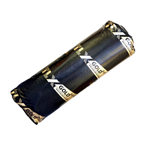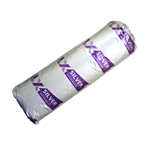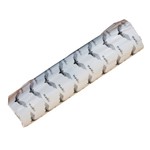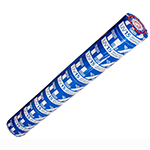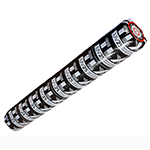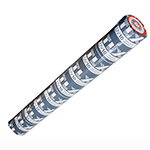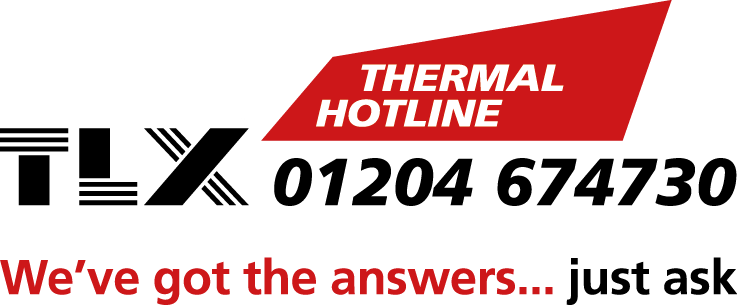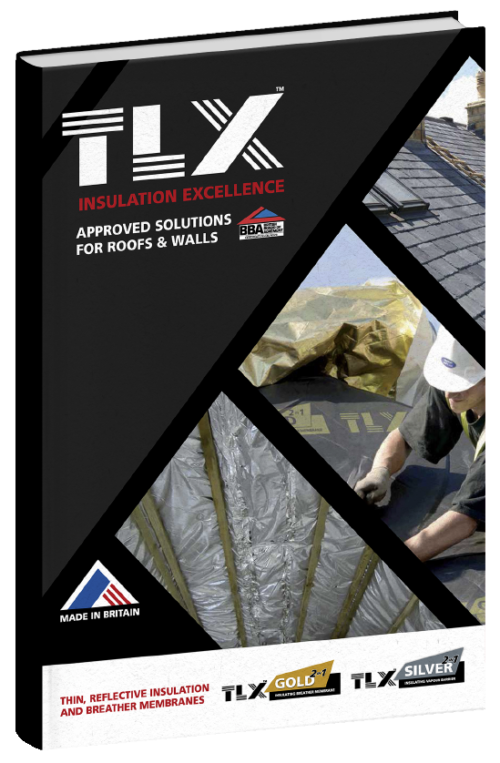Which Insulation Material Should I Use Alongside TLX Multifoil Insulation?
TLX multifoil insulation is one of the UK’s leading multifoil insulation brands. Our multifoil insulating products are incredibly effective as well as easy to install. Using multifoil insulation is an effective method to prevent heat loss and condensation in homes and buildings. However, it can also be used effectively in conjunction with other, more traditional types of insulation. One of the questions we are most frequently asked is ‘Which insulation material should I use alongside TLX multifoil insulation?’ Here’s everything you need to know:
What U Value Will I Need To Achieve?
U value regulations in the UK are becoming increasingly stringent. From the 15th of June 2022, all Building Regulation applications in England were subject to tighter regulations than before. The type of build you are working on will determine your target U values. For example, the required U value for an extension is 0.15 W/m²K, 0.16 W/m²K for an improvement to a roof, or 0.11 W/m²K for a pitched roof on a new build property.
TLX multifoil insulation can significantly improve the thermal efficiency of your building. It can achieve U values as low as 0.11 W/m²K when used alongside traditional forms of insulation. This is the best route to achieve the U values outlined above. It would be difficult, but not impossible, to meet the required U values for roof insulation outlined above with just one type of insulation. Using multifoil insulation and traditional insulation in conjunction is generally more effective. This will give you a better opportunity to achieve the lowest U values.
Different Insulation Types
The most common types of traditional insulation include mineral wool, PIR board, or phenolic foam. But how do these types of insulation compare to each other? And which will work best with TLX multifoil insulation? Here’s everything you need to know:

- Mineral wool. Mineral wool is made of non-metallic materials, such as slag, rock, or ceramics. These materials are then spun to create a wool-like texture. Mineral wool is sold as a flexible, fibrous mat. This roll can then be used in loft and roof insulation. Mineral wool works by trapping and holding air still. It does not rely on injected gas like other forms of insulation. Mineral wool can be used for both thermal insulation and acoustic insulation.

- PIR board. PIR (polyisocyanurate) boards are large flame and smoke-resistant sheet boards often used for insulation. Because PIR boards have a high thermal performance, only half the thickness is required when compared to mineral-based insulation products. This is true when comparing PIR boards to mineral wool too. Because PIR boards are rigid boards, they can be difficult to install. They must be cut to shape to be installed, which can be tricky if you are working in a small or tight space.

- Phenolic foam. The use of phenolic-based foams in insulation is growing in popularity. As the name suggests, phenolic foam has a foam-type consistency. A plastic foam forms an insulating core between two flexible tissue-faced layers. Phenolic foam is an excellent source of thermal insulation as it has low thermal conductivity. Phenolic foam can achieve thermal conductivity values as low as 0.019 W/m.K.
Multifoil insulation is the best insulation agent when working in roof and attic spaces. TLX is the UK’s leading manufacturer when it comes to multifoil insulation technology. TLX multifoil insulation is thin and flexible, making it quick and easy to install. In fact, it is so easy to install that it is regularly chosen by self-builders and enthusiastic DIYers. It comprises outer layers of coated metallised film, laminated to a non-woven polypropylene fabric. In order to achieve the U values specified by Building Regulations in the UK, many roofers find it easier to use multiple materials, rather than one form of insulation independently. If your objective is to maximise the resultant U value of your roof insulation whilst saving on both space and money, then combining different types of insulation is the best approach. TLX multifoil insulation is widely acknowledged to be the gold standard of insulation materials. But which other insulation should you use alongside TLX?
Combining Insulation Materials
The traditional insulation that works best with multifoil insulation will depend on what you want to achieve. TLX insulation works well with mineral wool insulation, PIR board and phenolic foam. When you combine multifoil insulation with mineral wool insulation, it will reduce the total thickness of the mineral wool insulation that you will need to use. However, the resultant installation will still be bulky. If you are looking for something more compact, then combine TLX multifoil insulation with PIR board. PIR board is very rigid, making it one of the more difficult insulation types to install. However, by combining PIR board with multifoil insulation, less PIR board will be required. This makes the installation time much quicker and the overall insulation much easier. Phenolic insulation is easy to install but also susceptible to decay. Combining it with the strength and benefits of multifoil insulation will considerably increase its longevity.
There are many drawbacks to using traditional insulation and installing it can be hard work. However, it can achieve good U values when used properly. By combining traditional insulation with TLX multifoil insulation you can mitigate many of its drawbacks. TLX multifoil insulation can be used in conjunction with all three of the traditional insulation types featured in this piece. Adding multifoil insulation will make all these traditional insulations easier to install, less bulky, and more affordable too. It will also achieve the primary objective of dramatically reducing the overall U value of your insulation. This will help you ensure that Building Regulation targets are met. The right combination of insulation types for you will depend on your goals. Do you want an installation that is easy, streamlined or affordable? Considering your own objectives will help you to choose the insulation that is right for you.
Do you require a bespoke solution?
We would love to hear from you. Our helpful team of product experts are on hand to help with bespoke solutions and U value calculations. Simply call +44 (0)1204 674 730 today.
Also, our LABC approved solutions guide has a wide range of pre-calculated solutions. You can download your free copy from the footer below.
Sample Pack Request
Error: Contact form not found.

